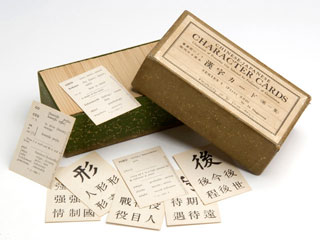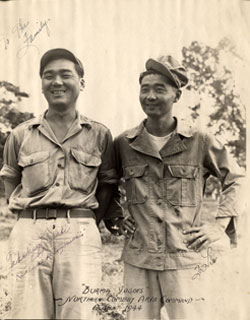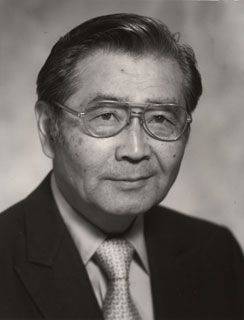Toshio Abe: Proven Loyalty
The Nisei (Japanese Americans) suffered the mistrust of the U.S. government and civilian population following the attack on Pearl Harbor. Those on the west coast were forced to move from their homes to internment camps where they lived for much of the war, and young Japanese American men were denied the right to enlist in military service until 1943. Toshio Abe was drafted into the army in June 1941, before the attack on Pearl Harbor. After America entered the war, he was sent to a military labor camp in Texas before his selection for training at the secret Military Intelligence School at Camp Savage, Minnesota. In a 2002 oral history interview with Thomas Saylor, Mr. Abe remembered his time at the school, and the impact of wartime prejudice on his family.
Audio
Transcript
TS: How did you end up at military intelligence school at Camp Savage, Minnesota?
TA: That's a good question. Going back a ways, prior to Pearl Harbor, the U.S. Army and the military realized that there was something coming on, on the part of the Japanese military. They felt that in the United States, who were the individuals that are proficient in the realms of reading and writing? So they literally went out looking for so-called Japanese linguists among the Caucasians, because they didn't trust any people of Japanese ancestry. They found that they couldn't find all that many heads out there, that many bodies. So they started looking at Japanese-Americans, the Niseis. They looked at guys that had spent some time in Japan, assuming that they knew the language a lot better than some of us.
In August of 1941 they rounded up some sixty Nisei (Japanese-Americans) and sent them to Presidio, San Francisco, for a refresher course in the language. They started an intensive course in reviewing the language and then Pearl Harbor broke out. Then they were in a panic. Here again, they couldn't trust any of us. They couldn't find any linguists.
Eventually in March, when they evacuated all the Japanese-Americans, they selected Camp Savage. The question comes up, "Why Camp Savage in Minnesota?" The military went out to ten metropolitan areas in the U.S. to get a reaction as to what the social attitudes might be toward Japanese-American guys in uniform when, say, on a Saturday night, when they came into town. They found that the Twin Cities area was the least negative toward that, so that’s how they decided to start this intelligence school at Camp Savage in Minnesota. They rounded up 175 of us from Fort Lewis, Washington and Fort Ord. They sent us up here to Savage, Minnesota in June of 1942.
TS: What was the training like there?
TA: A six-month cycle. We were in class eight hours a day, five days a week. On top of that, we had two and a half hours of studying at night.
TS: That’s a full program.
TA: Yes. We were off on Saturdays and Sundays.
TS: Did you take different courses or was it all just language?
TA: They taught us reading, writing, conversational Japanese. We studied the Japanese military system. We studied Japanese religion, Buddhism, and how the Japanese government operated. We became familiar with all this stuff. We'd do a better job eventually, rather than being totally ignorant. The majority of us had never been in Japan.
TS: Was it clear to you when you were at Camp Savage what you were going to do when this was over?
TA: We knew that we were going to be involved in the translation of documents and interrogation of prisoners of war. We knew that was why we were going through all of this.
TS: The six-month cycle at Savage gave you time to get acquainted with Minnesota a little bit?
TA: Yes. Minnesota winters. Because most of us were from Hawaii and California.
It wasn't easy. In fact, the first winter here, I looked at an outside thermometer. It said thirty-six degrees below. I told myself, "I swear to God this will be my last winter here!" We didn't even know how to dress. The idea in cold climates that you put on layers of clothing, loose clothing in order to keep warm. Not knowing how to dress. Many of us suffered frostbite on our feet and hands and ears.
TS: Did you have opportunities to get off base, to go into town?
TA: Sure. Weekends.
TS: How was that?
TA: My typical answer to that question is the difference between night and day from the West Coast. Because here again, we'd go into town and the civilians don't look at you like you're some kind of subhuman animal walking down the street like they did on the West Coast. People were pleasant, friendly.
TS: Were you in uniform when you went to town?
TA: Yes, because this was wartime. You have to be in uniform. Prior to Pearl Harbor you could wear civilian clothes when you were off base. But anyway, we were in uniform. Which reminds me—when we first came to Savage there was no transportation, no bus service or anything to town. We used to hitchhike. There was another guy and I, I remember one Saturday we were hitchhiking and a guy picked us up. We were in uniform, and he asked us if we were prisoners of war. I thought, "Why would a guy ask us that question and still pick us up?" [Laughs]
Yes, he was friendly. We told him that we weren't prisoners of war, but also we were instructed not to talk too much about the intelligence work. So there were a lot of civilians that saw us around there, but they really didn't know why we were there.
TS: What was the condition of your mom and brother who were in the [Japanese internment] camp in Arizona at this time? What kind of impression did you get from them at this time?
TA: I don't know of any unpleasant incidences. Just like a prisoner of war camp, you know, barbed wire. Trenches and Army guards. They weren't allowed to leave the area. Eventually, if they could find sponsors or definite areas where they could relocate, they were allowed to leave. That included schools, if kids wanted to go to school, but they had to be held accountable as to their location if they left the place. They all wanted to leave these camps but there were many of them that felt that, "The government put us here, and we’re going to stay here until they find a place for us to go."
TS: Did you have feelings on what you wanted your Mom and brother to do as far as leaving or staying in the camp?
TA: Yes. I wanted to get them out. That's why I brought them out here [to Minnesota].
TS: Were they happy to leave?
TA: Yes. The camps—they weren't abused or anything, but it wasn't anything like home. About the closest thing you could say was, it was like an Army camp, barracks, mess hall, latrines. That's about it. Eventually, after a couple years, they built a motion picture hall where they had movies, and they built a gymnasium.
TS: When did you have your mother and your brother join you here in Minnesota? You got here in June of 1942 and you mentioned it was a six-month cycle that you were on.
TA: I think it was in 1943.
TS: Is that when you went overseas as well?
TA: I went overseas in 1944. I don't know if I mentioned it or not, but in that six months, the first six-month course, they were sending guys up to the Aleutians [Islands, Alaska] and the southwest Pacific and Guadalcanal [in the Solomon Islands], and to the Marine Corps and Navy. I was the only single person who was not put on the shipping list. I inquired about that and they said, "Your family background. Your dad was in the fishing business," and this and this and that. "And so you're still under question as far as your loyalty goes." I said, "I've already been in the service for two years." Eventually they cleared me. That was six months later. While I was still sitting around there I went back into class to the second session.
TS: So you were at Camp Savage for quite a while.
TA: I was there over a year.
TS: And you didn't ship out overseas until 1944.
TA: It was December 1943.




Source
Abe, Toshio; Thomas Saylor, Interviewer, Minnesota's Greatest Generation Oral History Project, Thomas Saylor; Minnesota Historical Society Oral History Collection, 2002.


